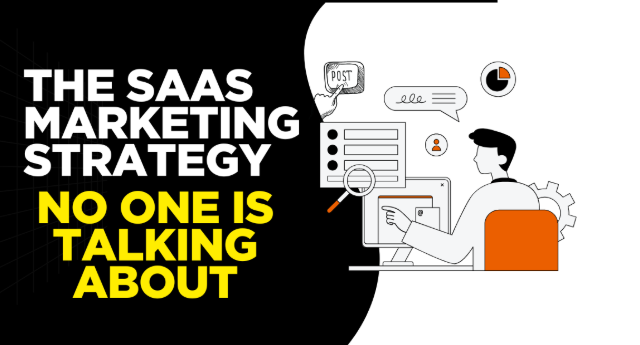Reducing Customer Acquisition Costs for SaaS: A Paid Media Attribution Case Study
- Eyal Dror

- May 8
- 3 min read
Updated: Jun 26

In the SaaS world, sustainable growth isn’t just about acquiring more users—it’s about acquiring them profitably. That’s why every high-performing team in 2025 is focused on how to lower CAC for SaaS. Reducing Customer Acquisition Cost (CAC) is the key to unlocking more capital-efficient scaling, and doing it right involves a mix of strategic CPA reduction, smarter SaaS paid media allocation, and optimizing your SaaS customer acquisition journey.
This guide breaks down exactly how SaaS companies can improve acquisition economics while scaling MRR predictably.
Understanding CAC and Why It’s a Problem in SaaS
CAC stands for Customer Acquisition Cost—how much you spend in sales and marketing to acquire a single paying user. In SaaS, where the revenue comes in over time through subscriptions, CAC is only profitable if your LTV (Lifetime Value) significantly exceeds it. The golden rule? Aim for at least a 3:1 LTV:CAC ratio.
But with rising ad costs, longer sales cycles, and stiff competition, many companies are seeing CAC go up while ROAS falls. That's where it becomes crucial to lower CAC for SaaS using real, repeatable systems—not quick hacks.
What Drives Up CAC in SaaS?
There are several factors pushing CAC higher in today’s market:
First, over-reliance on one or two major platforms (like Google or Facebook) without diversification is a big issue. Second, teams often don’t have clear attribution, so they keep spending on ineffective channels. Third, inefficient sales handoffs, poor landing page conversion, and generic messaging all drive up acquisition costs.
To succeed in 2025, SaaS leaders need to combine performance data, buyer psychology, and full-funnel insight to lower CAC for SaaS effectively.
Case Study: How Lead Pilot Cut CAC by 42% in 6 Months
The B2B SaaS sales automation firm, Lead Pilot, has been able to cut its CAC by 42% after it overhauled its customer acquisition efforts. They replaced the last touch attribution with better data attribution, fine-tuned paid media by stages, and stopped chasing MQLs and started targeting PQLs with high intent. With CRO strategy, they increased the landing page conversion rate from 11% to 19%, whilst investing in SEO content which brought about increased lead quality and less reliance on paid ads.
Therefore, ROAS was doubled, and demo conversion, in particular, was up by 72%. LeadPilot was able to generate a very efficient and cost-effective acquisition strategy that rolls up the entire funnel for the growth of the business at 2025.
Smart SaaS Customer Acquisition Tactics That Work in 2025
To truly optimize SaaS customer acquisition, top companies are using a layered approach:
They launch performance-driven ad campaigns with real-time optimization.
They nurture leads using behavior-based email automation.
They align sales and marketing teams around shared KPIs like pipeline velocity.
They use intent platforms like G2, Clear bit, and Bombora for targeting high-fit accounts.
These strategies don’t just improve lead quality—they enhance funnel progression speed and reduce waste, directly contributing to how companies lower CAC for SaaS effectively.
Final Thoughts: Why Lowering CAC is the #1 SaaS Growth Lever
CAC isn’t just a metric—it’s a reflection of how smart your entire go-to-market motion is. When you lower CAC for SaaS, you're not just saving money—you’re increasing profitability, capital efficiency, and exit potential.
From CPA reduction through retargeting and CRO, to smarter SaaS paid media alignment and content-driven growth, there are more tools than ever to acquire customers more affordably.
The companies that win in 2025 won’t be the ones with the biggest budget. They’ll be the ones with the most efficient system for SaaS customer acquisition—and the lowest CAC.
FAQs
1. What is CAC in SaaS and why is it important?
CAC, or Customer Acquisition Cost, measures how much you spend to acquire each new customer. Lowering CAC improves profitability and growth scalability.
2. What’s the fastest way to lower CAC for SaaS?
Refining lead quality, improving landing page conversion, and switching to multi-touch attribution are quick ways to lower CAC for SaaS.
3. How does SaaS paid media impact CAC?
Paid media can either help or hurt CAC depending on targeting accuracy, ad creative, and funnel alignment. Smart SaaS paid media lowers CAC when optimized correctly.
4. What role does CRO play in CPA reduction?
Improving page performance and UX helps convert more visitors at lower cost, supporting CPA reduction without increasing spend.
5. What’s a healthy LTV:CAC ratio for SaaS?
A healthy ratio is at least 3:1. This means your average customer generates three times the value of what it cost to acquire them.




Comments